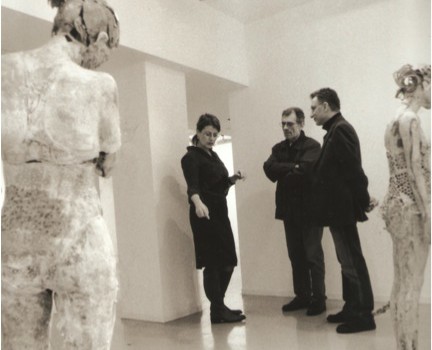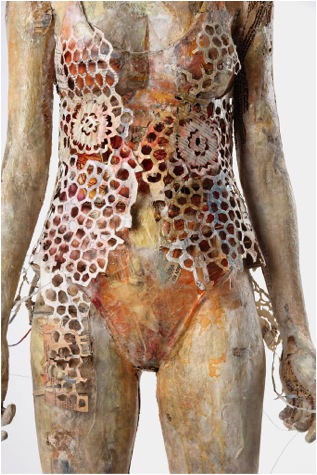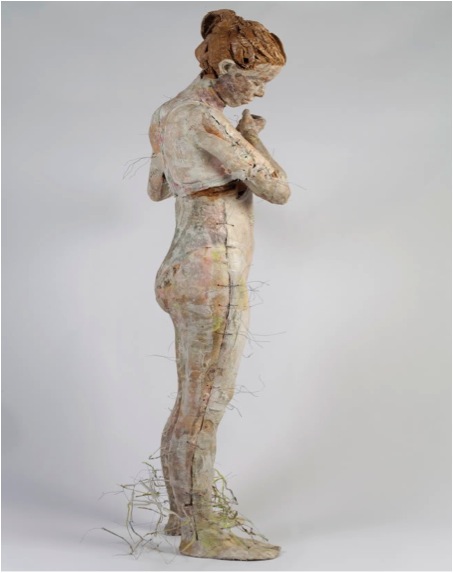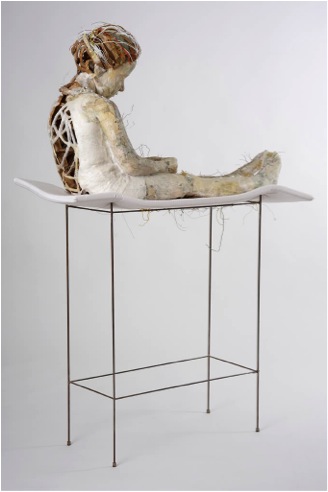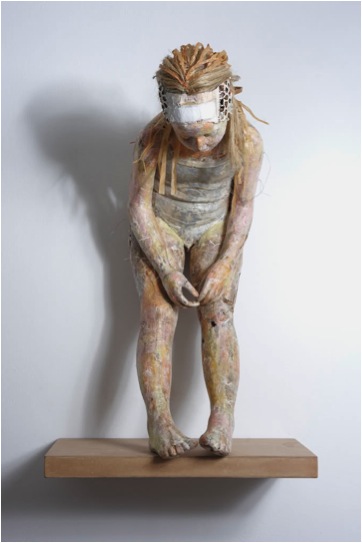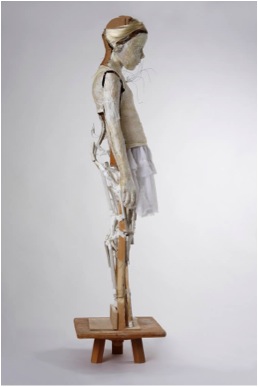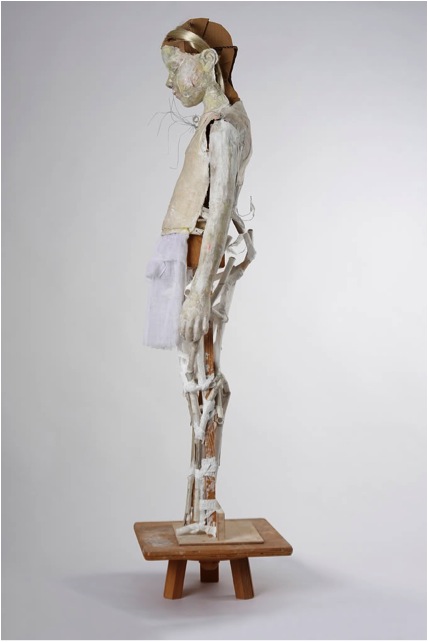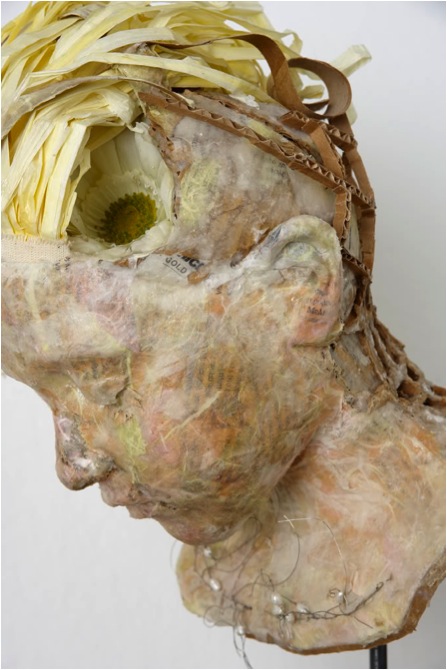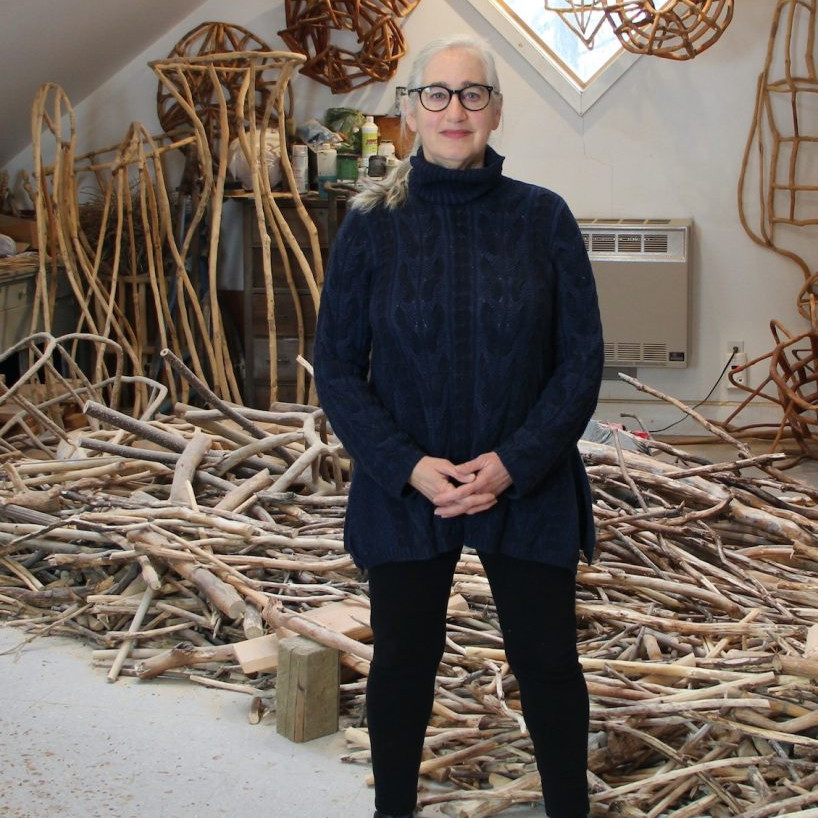Vally Nomidou Sculptor - Athens, Greece.
Your exhibition ‘Let it Bleed’ is made up of female forms. Can you explain the vulnerability you have been able to portray?
Fragility is the way women artists insisted to present as a plastic value in the 20th century. I worked out my figures spontaneously with the intention to show the mental state of ‘’between’. Between different trends, orientations, routes, decisions. The situation to be between and to do connections, fragile connections with a variety of possibilities, with uncertainty. Without a final decision. With tyranny. The difficulty, the sensitivity, the contrary emotions that coexist, the agony, the empathy, the cowardice, the fear. The game and the pleasure to express all this situation sometimes gently and sometimes hard. That wonderful ’embarrassment’ in routes which you discover surprisingly. All these are a fragile world written on the female body which I build.
How many figures were in the exhibition?
There were seven figures in the exhibition, two small heads and a flower hand as well.
Can you expand on the use of stitch in the work?
Stitch as the meaning of the word describes, can be sewing, stitching (difficult, unnatural union) suggesting wound: wounds and holes (an emptiness). Mental gaps, wounds, difficult compounds that can be shown as wild jewellery, as strange rhythms on the figure. Stitches, episodes of soul and form.
Explain the building process in your figures?
I choose the person and I think with my senses what is that I want to show. I imagine postures and I try postures suggesting an unbalanced situation. We photograph all around the figure. I get molds partially from different parts of the body. I photograph gaps and compounds of the molds. I collect my molds on a table. At this stage I start my paper sculptures.
I create a colored palette collecting papers. Toilet paper, handmade paper and old newspapers. I make layers from paper inside the molds with acrylic glue and paintbrush. That means that I decide before which colour my figures will have.
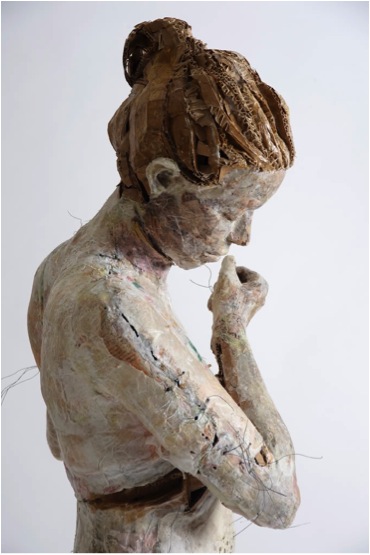
With a specific printing tool I stick cardboard inside my mold. After drying I get my figure out of the molds .At the end I have many parts of paper forms. Then I start building. I connect the parts using cardboard till I create a whole figure. The difficult and beautiful work starts now. I use wooden tools to work with my figures. Knives, rasps, files. I work the whole form adding and removing again and again.
Who are your sitters and the personality of your figures?
People I know, anonymous people, simple people, children, (my son, a refugee girl, a lonely girl with a famous family) an abnormal dancer…
Why have you placed some figures onto forms?
They are abandoned and beautiful bedded in morbidity.
Can you discuss the personality of your figures?
All of them have something vulnerable. They are personalities under formation, defenseless against their fate. The women usually have a narcissism covering their despair.
Explain the fragility of #15 by both her age and position?
The same person express the abandonment, placed on the shelf, on high level, marginally placed on the edge.
In #19 you have left a large area showing the base, discuss this?
It is the same person again, created without any purpose to hide something or to become a plastic value. It is abandoned so to be exposed her draft construction of her structure. With that way it is given a tension to the breakdown of her personality and her individual construction. There is an emphasis to the coincidence and the deficiencies that create that image. That drama is emphasized by the base, which is a working base, and as a memorial stand. It is a contrast, an exaggeration. Let’s say it is a hymn to those who face difficulties and harm in their childhood.
Also on #19 colour is more prominent, can you explain why?
All the material on that sculpture are unique and natural, as I found them. With their own identity and colour.
#20 and #21 you have not constructed whole figures rather a head and hands discuss this part of the exhibition?
#21 is a symbol. These parts of the figure are changed and separated from the whole sculpture. #20 is a small head another version of my figure portrait.
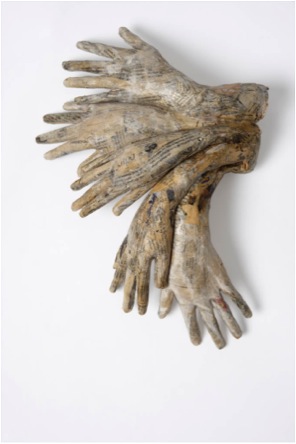
#20 is a small head another version of my figure portrait.
What lead you to limit you work to paper?
I love paper and its history. I like it because it comes from East and from the European Middle Ages tradition. It a light material. (It’s not belong to the traditional culture of sculpture). I reminds me maps, miniatures sensitive and light objects that show and describe real and imaginary worlds. It is light, recyclable and it has history. I love its discretion.
What are you currently working on?
I am working on projects, work on paper and some artist’s books (thoughts and feeling diaries) and botanical drawings.
Contact Details:
Email: nomidouv@yahoo.gr
Vally Nomidou, Athens, Greece
Translation by Apostalia Tasiou
Interview by Deborah Blakeley, September 2014
Think a colleague or friend could benefit from this interview?
Knowledge is one of the biggest assets in any business. So why not forward this on to your friends and colleagues so they too can start taking advantage of the insightful information the artist has given?
Other artists you may be interested in:


